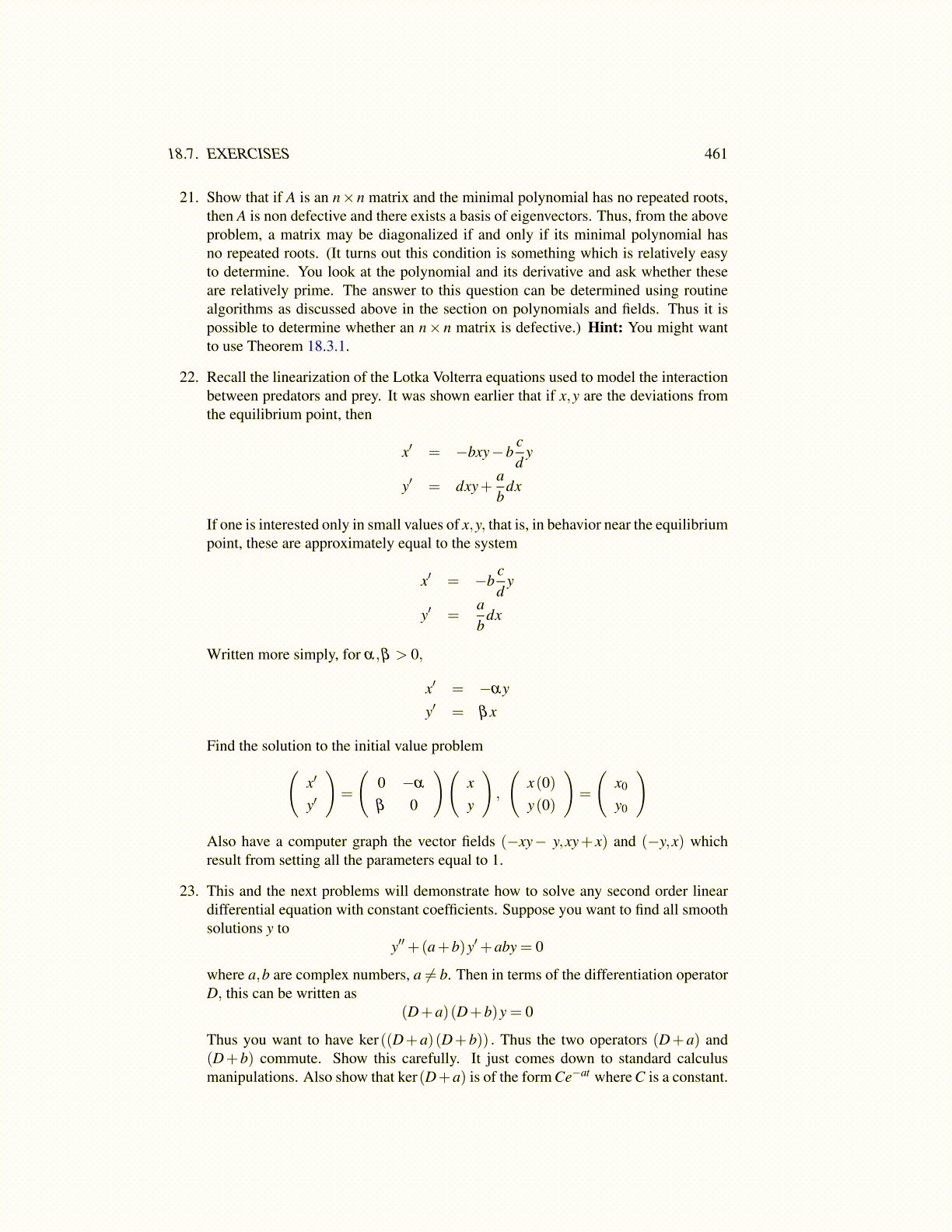
18.7. EXERCISES 461
21. Show that if A is an n×n matrix and the minimal polynomial has no repeated roots,then A is non defective and there exists a basis of eigenvectors. Thus, from the aboveproblem, a matrix may be diagonalized if and only if its minimal polynomial hasno repeated roots. (It turns out this condition is something which is relatively easyto determine. You look at the polynomial and its derivative and ask whether theseare relatively prime. The answer to this question can be determined using routinealgorithms as discussed above in the section on polynomials and fields. Thus it ispossible to determine whether an n× n matrix is defective.) Hint: You might wantto use Theorem 18.3.1.
22. Recall the linearization of the Lotka Volterra equations used to model the interactionbetween predators and prey. It was shown earlier that if x,y are the deviations fromthe equilibrium point, then
x′ = −bxy−bcd
y
y′ = dxy+ab
dx
If one is interested only in small values of x,y, that is, in behavior near the equilibriumpoint, these are approximately equal to the system
x′ = −bcd
y
y′ =ab
dx
Written more simply, for α,β > 0,
x′ = −αy
y′ = βx
Find the solution to the initial value problem(x′
y′
)=
(0 −α
β 0
)(xy
),
(x(0)y(0)
)=
(x0
y0
)
Also have a computer graph the vector fields (−xy− y,xy+ x) and (−y,x) whichresult from setting all the parameters equal to 1.
23. This and the next problems will demonstrate how to solve any second order lineardifferential equation with constant coefficients. Suppose you want to find all smoothsolutions y to
y′′+(a+b)y′+aby = 0
where a,b are complex numbers, a ̸= b. Then in terms of the differentiation operatorD, this can be written as
(D+a)(D+b)y = 0
Thus you want to have ker((D+a)(D+b)) . Thus the two operators (D+a) and(D+b) commute. Show this carefully. It just comes down to standard calculusmanipulations. Also show that ker(D+a) is of the form Ce−at where C is a constant.